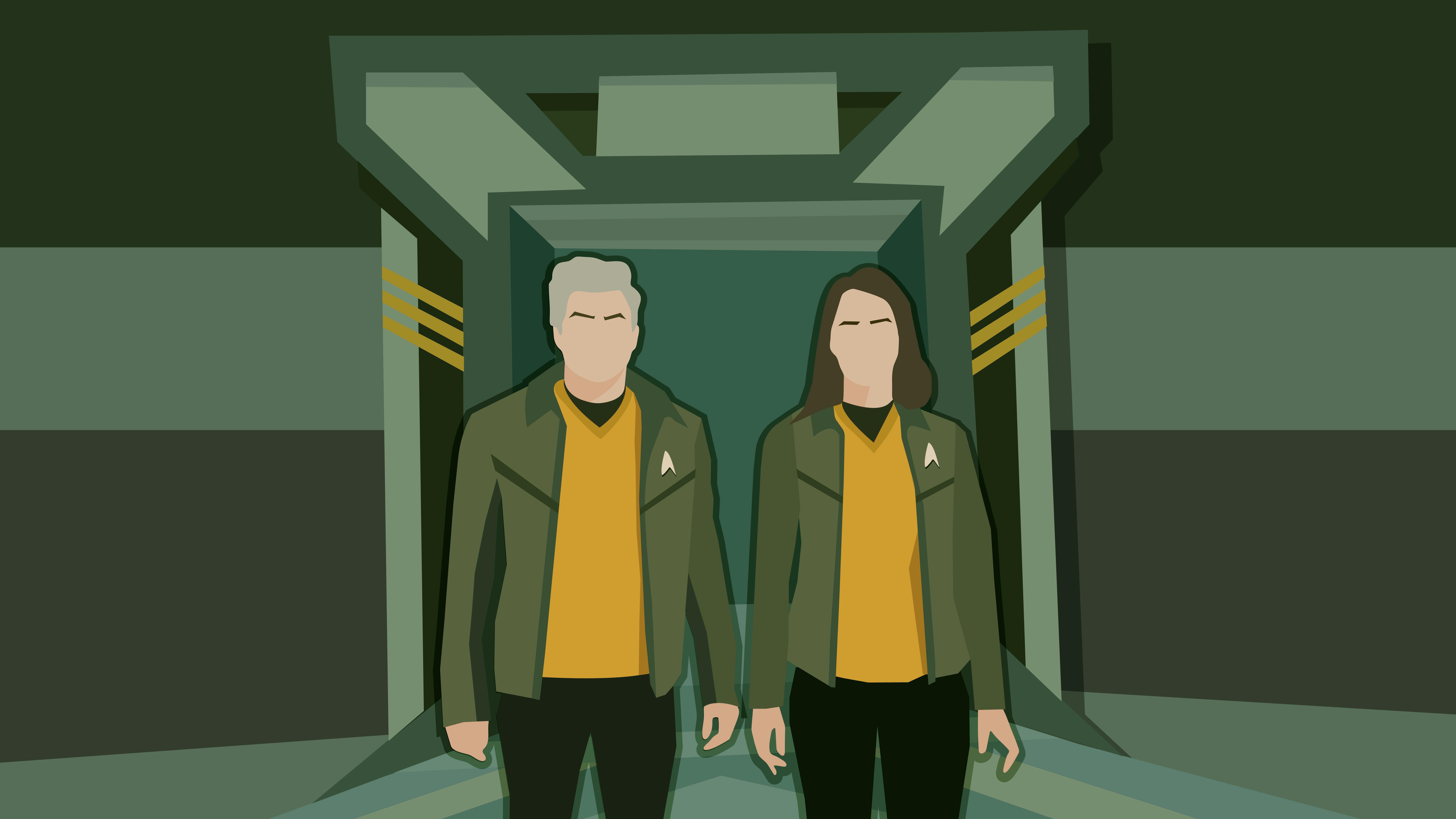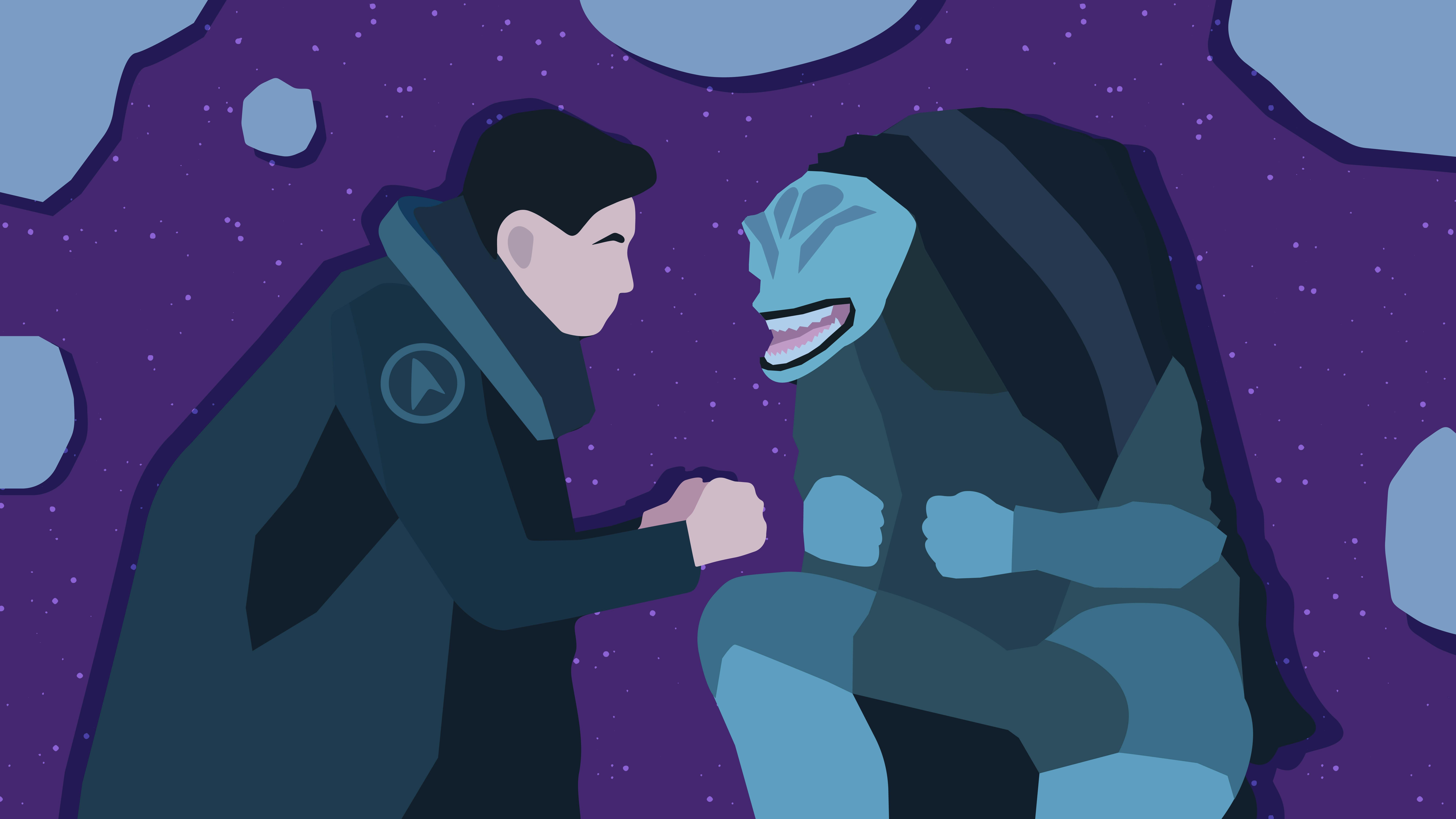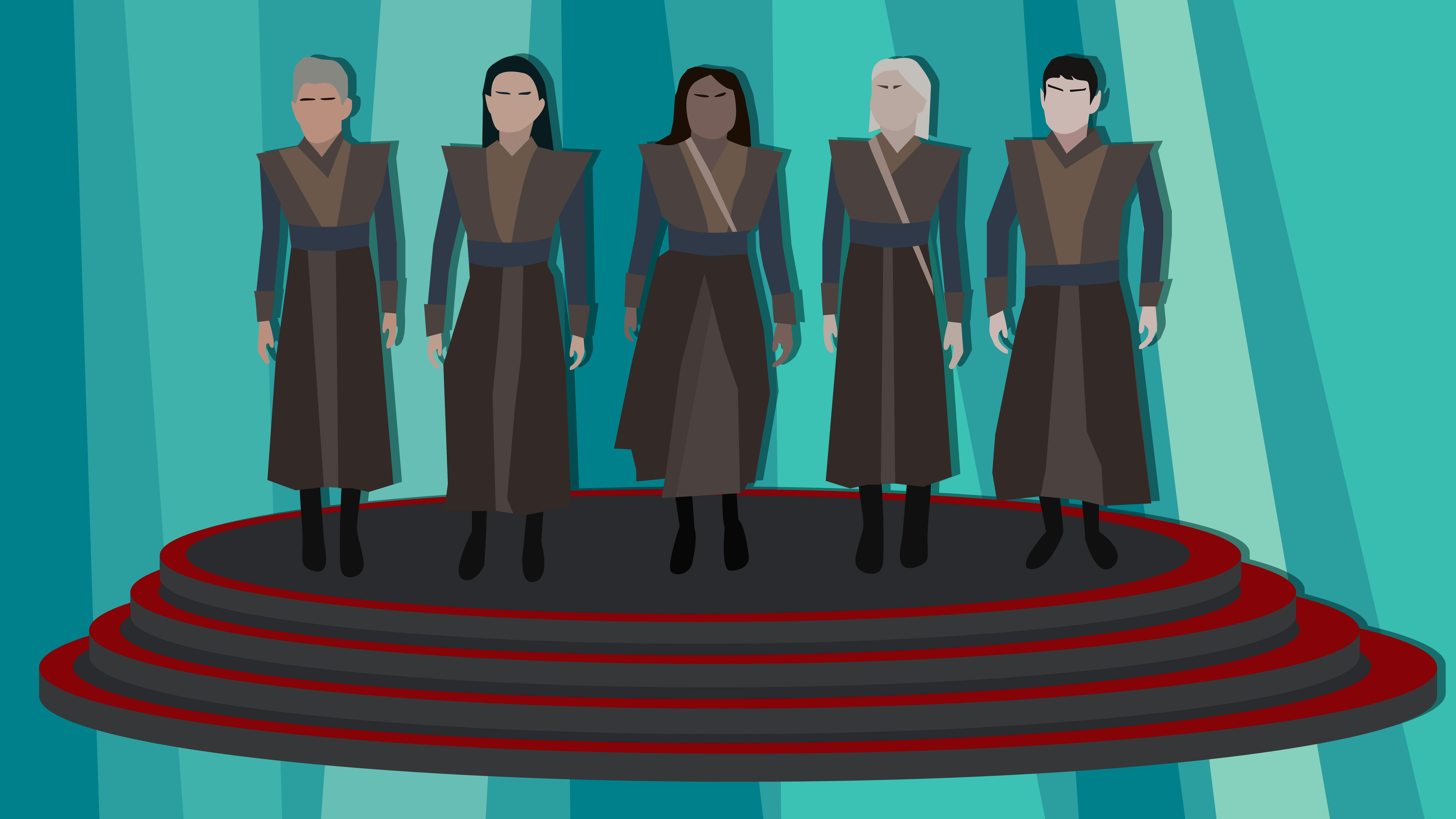Published Jun 21, 2024
How the Picard Season 3 Soundtrack Unlocks All of Star Trek
For World Music Day, let's look at how Picard's final score stretches across the entire final frontier, from familiar themes to deep sonic cuts.
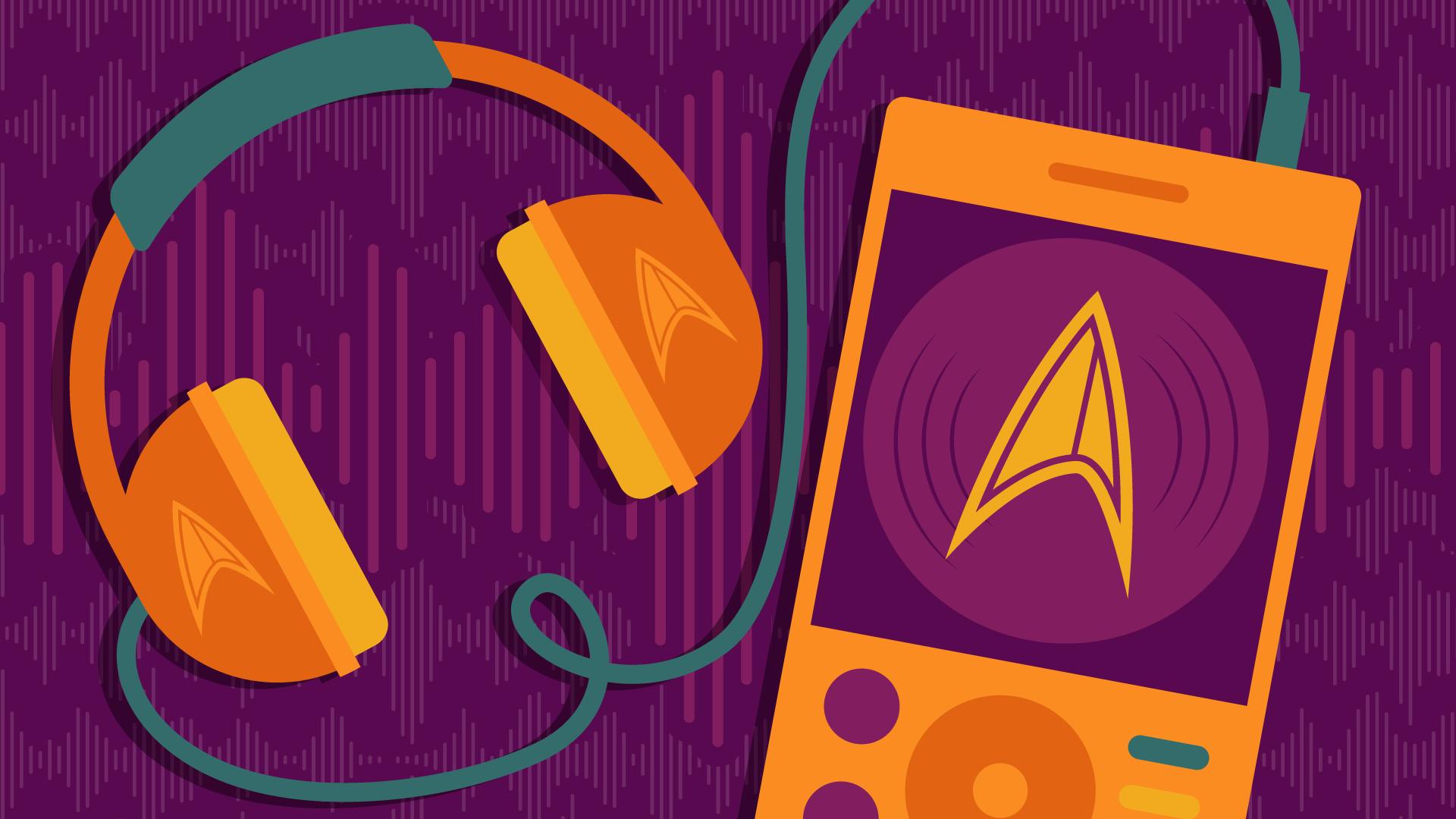
StarTrek.com
The music of the Final Frontier is one of the most grounding aspects of the entire Star Trek phenomenon. Rather than sounding overtly futuristic, the musical world Trek has always been the opposite — old-fashioned and classic. When Nicholas Meyer hired James Horner to compose the music for , he asked for a score that was "nautical, but nice." This single phrase perhaps best describes a large swath of famous Star Trek scores; the music is rooted in an antique style, combined with a buoyant sense of optimism. The music of Trek looks forward, partly, by looking back. In real life, Star Trek scores have been played at the commissioning of space shuttles, at least one U.S. Presidential Inauguration, and on March 11, 2024, Jerry Goldsmith's themes from were played during a ceremony in which Sweden was inducted into NATO.
Sometimes, it seems the classical music of Star Trek is oddly more pervasive in everyday life than Star Trek itself. Yes, there have, of course, been examples of non-classical music in Star Trek; from Steppenwolf's "Magic Carpet Ride," to 's "Faith of the Heart," Kirk blasting The Beastie Boys' "Sabotage," and, in 2023, musical theater and pop stylings throughout "" in . But, for almost six decades, classical scores have been the sonic glue binding the Trek universe together. From composers like Alexander Courage and Sol Kaplan, to Jerry Goldsmith and James Horner in the classic films, to Dennis McCarthy in era, 's scores for the Kelvin Universe films, to Jeff Russo in and Chris Westlake in , on Strange New Worlds and , each Trek score often contains a piece of another. But, perhaps more than any orchestral Star Trek event to date, the soundtrack for Season 3 bridges various eras simultaneously, but also created edgy, new directions for Trek scores that had never been tried before.
The Picard Season 3 score — composed by Stephen Barton and Frederik Wiedmann— is a rosetta stone of nearly all of Star Trek music, ever. Here's your guide to why this 2023 score is so unique, how it's the perfect place to start your Star Trek musical education, and why, if you haven't already, consider spinning this one on vinyl.
"All Good Things…Must Come To An End"
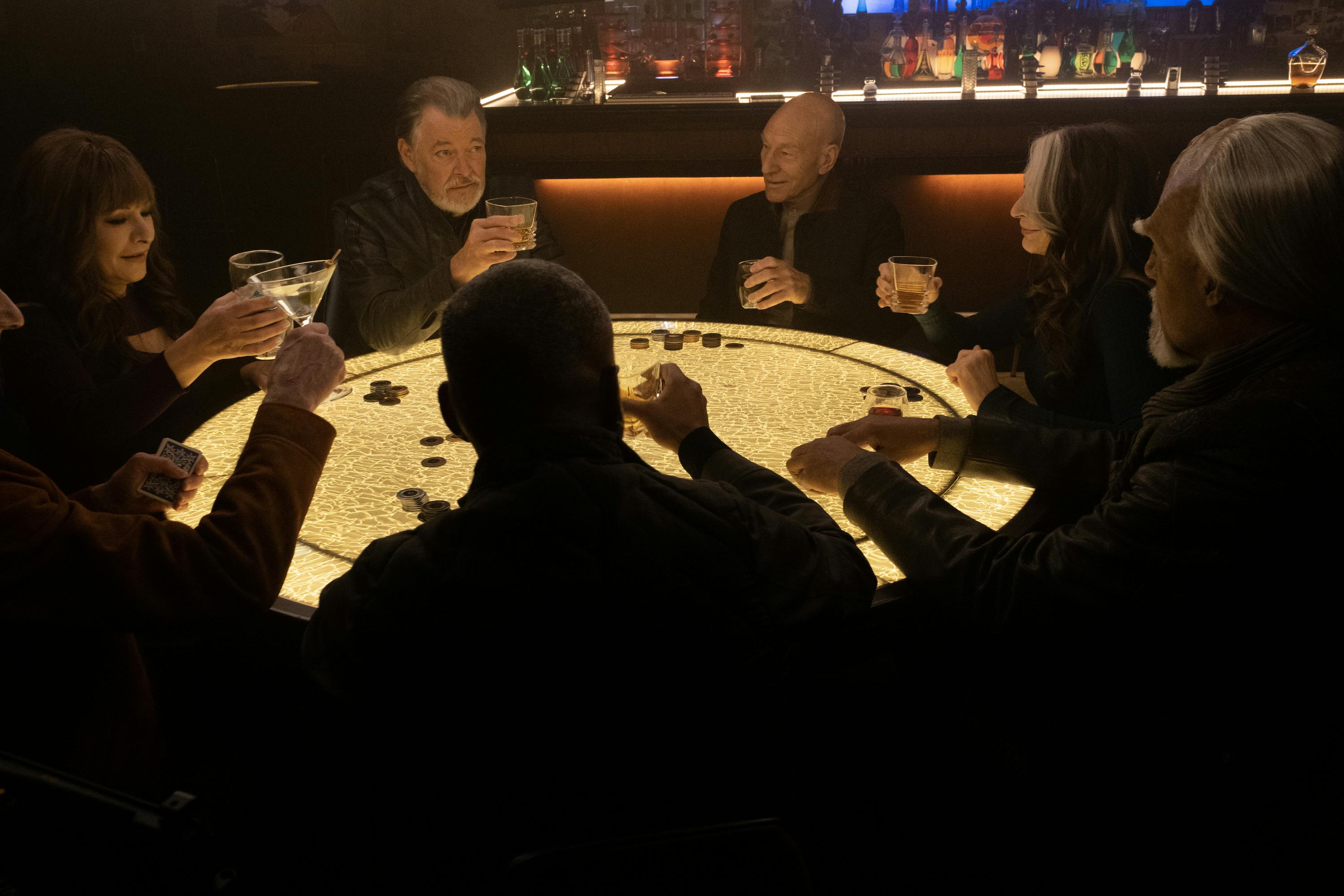
"The Last Generation"
StarTrek.com
While it's somewhat obvious that Star Trek: Picard Season 3 is a direct follow-up to Picard Season 2, a huge thrust of the series is also a coda to the era of The Next Generation TV series and four feature films. So, throughout this score, there are various musical references to the hugely famous main theme from Star Trek: The Next Generation composed by Jerry Goldsmith. But, within this musical cue, there's an Easter egg to 1979. As many fans know, the immortal TNG main theme was actually first composed by Goldsmith for the film . And while the bombastic march opens that film, and every episode of TNG, a slower more ballatic version of the theme was created for the classic track "The Enterprise," in which Scotty and Kirk view the newly refitted ship for the first time.
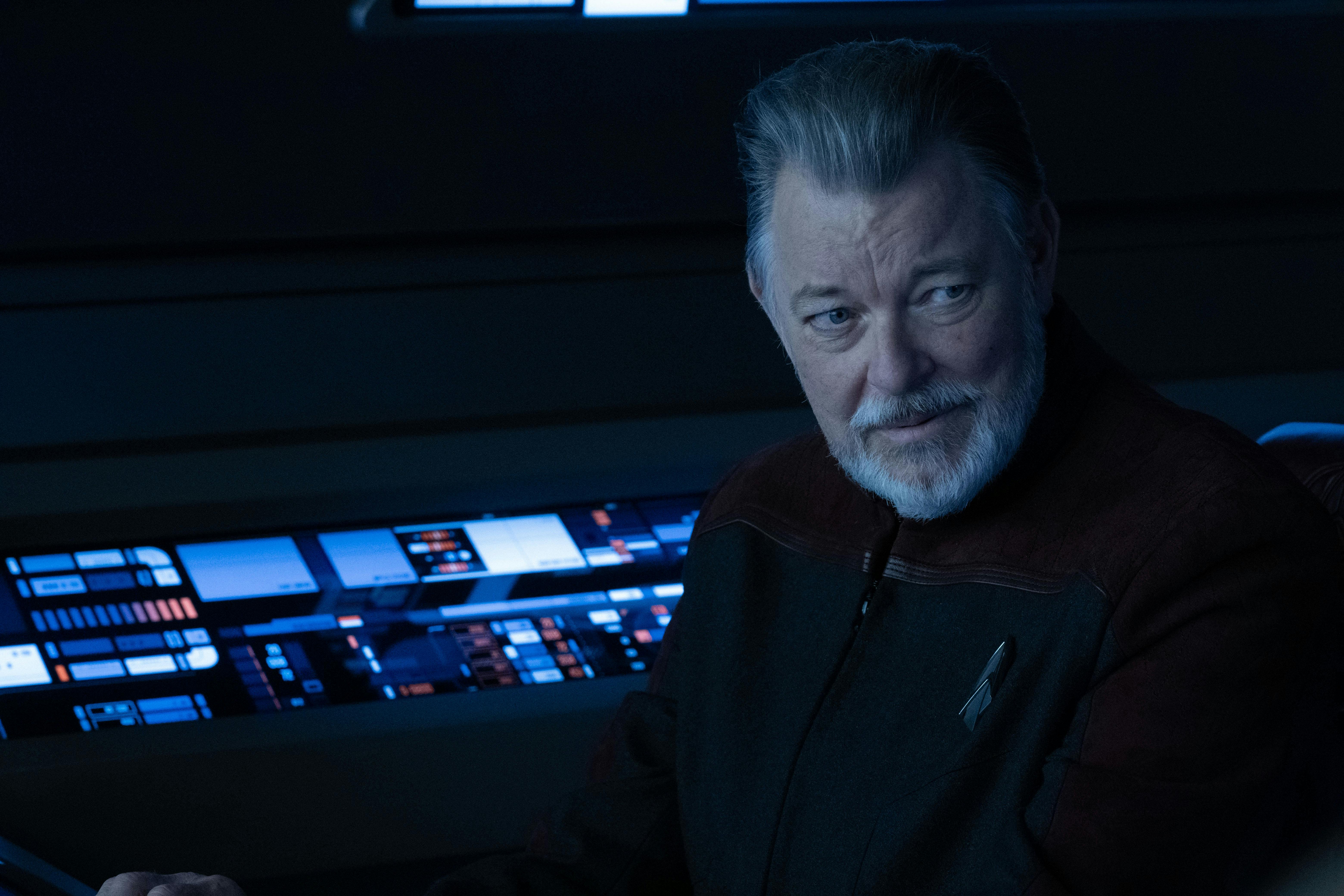
'The Next Generation'
StarTrek.com
In Picard Season 3, this dreamy arrangement of the TNG/TMP theme is on full display in the back-to-back tracks "Hello, Beautiful" and "Leaving Spacedock," in which Picard and Riker take a shuttle to the U.S.S. Titan-A, and we hear the gentle strings of "The Enterprise" from 1979. However, as this musical moment continues, and Commander Seven takes the Titan out of spacedock, a new musical theme emerges, which showrunner Terry Matalas has called "The Titan Theme," since it plays in many instances in the series that focus on the scrappy starship itself. And yet, by the end of Picard Season 3, the Titan becomes a new version of the Enterprise. So, when Riker and Picard roll-up on the Titan and hear the TNG/TMP main theme, it's not just a neat Easter egg, the music becomes a foreshadowing element that helps tell the story.
Deep Cuts Reveal Myriad Star Trek Legacies

"The Next Generation"
StarTrek.com
Just as Beverly Crusher sends Picard a transmission as a myriad codec, the Picard Season 3 soundtrack contains a myriad of references to all sorts of other Star Trek music. Some of these cues are somewhat obvious. The end-credits for the series borrows from the First Contact main themes, first introduced in 1996, while Jeff Russo's arrangement of the TNG main theme, crafted for Picard Season 1 and Season 2, still exists as part of the brief title card at the top of each episode. But, once you start digging into the episode-by-episode tracks, deeper cuts start to reveal themselves, ever so slowly.
In "Old Communicator," ominous woodwinds play as Picard riffles through his stuff, to find his TNG-era red uniform. These notes are reminiscent of Ron Jones' music for "" in The Next Generation, reminding us of that time Jean-Luc lost a uniform just like this when he was assimilated by the Borg. But, for composers Barton and Wiedmann, this is just the first of many musical cues from the past.
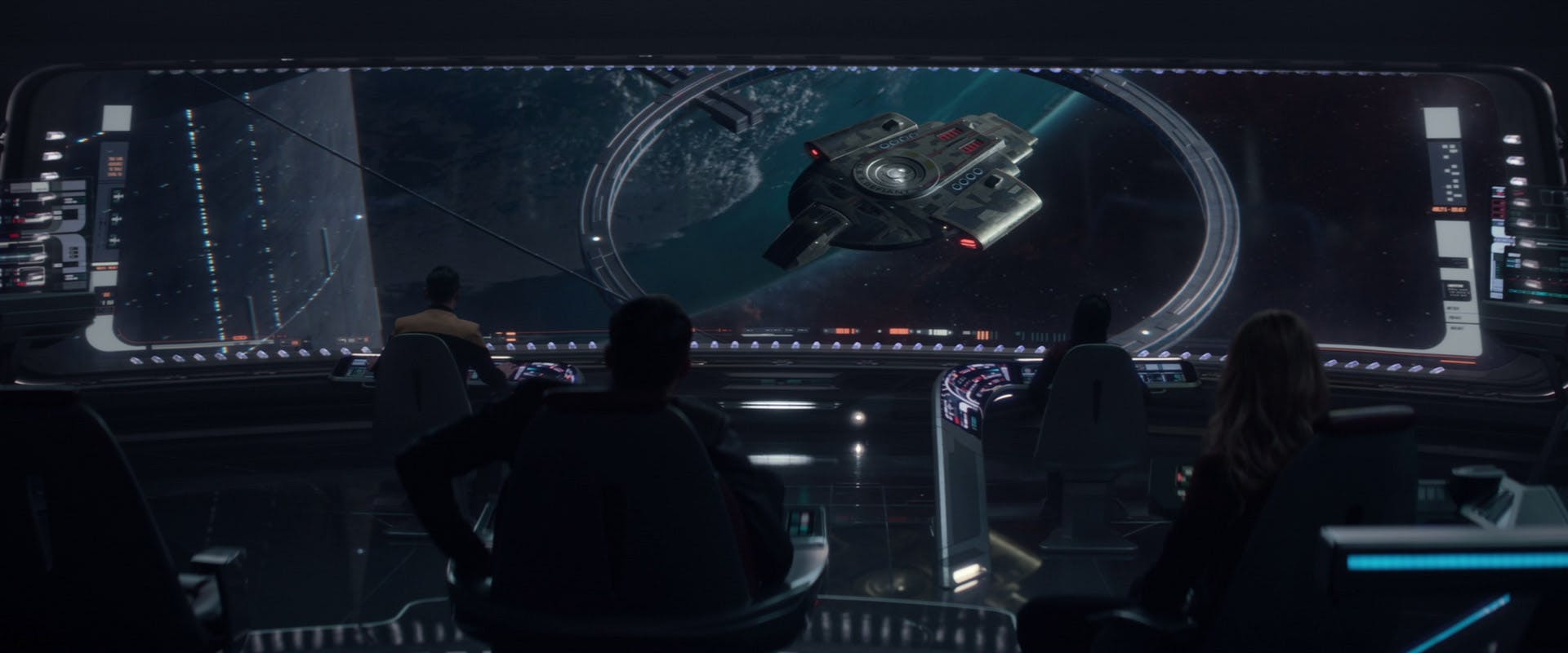
"The Bounty"
StarTrek.com
When the Titan arrives at the Fleet Museum in the sixth episode, "," we get a track called "Legacies," which has rapid-fire sonic Easter eggs like no other piece of Star Trek music before or since.
As Seven and Jack observe the various ships in the museum, each one gets his own theme; for the Defiant, we hear Dennis McCarthy's main theme for , for the movie-era Enterprise-A, an arrangement of the Alexander Courage TOS theme, and as Seven waxes nostalgic about the U.S.S. Voyager, a triumphant and bittersweet rendition of the Jerry Goldsmith main title from plays. Impressively, these musical cues are packed into three minutes and fifteen seconds, meaning "Legacies," tells the story of four starships, through music, in a very short amount of time.
Did we say four ships? Yes! Because in addition to the Defiant, Enterprise-A, and Voyager, the medley of "Legacies" eventually concludes with Leonard Rosenman's 1986 themes from . And that's because Jack realizes that the captured Klingon Bird-of-Prey, which Bones christened the H.M.S. Bounty all those years ago, has a cloaking device that the crew of the Titan can use. And so, this wonderful nod to Rosenman's music not only references The Voyage Home, but also moves the present tense of the story forward.
That Cinematic Feeling
A Musical Legacy: Scoring the Final Season of Star Trek: Picard
On the liner notes to Picard Season 3, Terry Matalas specifies that the score for this season was designed to remind fans of the big, epic music from the films. Even though this was a season of a TV series, the sound of Picard Season 3 is cinematic. "I knew early on that Picard Season 3 needed to sound like the great Trek film scores that came before it," Matalas writes in the liner notes. "[When] I was five…the track 'The Enterprise' was imprinted onto my brain."
And so, in collaboration with composers Barton and Wiedemann, Matalas steered the music of Picard Season 3 into a massive tribute to the entirety of previous Star Trek film scores. This was accomplished by the sonic Easter eggs we've just pointed out, but this feeling also exists more broadly throughout the entire soundtrack. The dark track "Dominion" isn't one that contains any sonic Easter eggs, but is unique to this soundtrack, as is the heroic hero theme for the Titan, heard in "Leaving Spacedock" and throughout the all ten episodes of the season.

"The Last Generation"
StarTrek.com
But, the brilliance of the Picard Season 3 soundtrack isn't that it simply checks-off various Star Trek musical boxes. Instead, it seamlessly blends the old with the new. In "Legacy and the Future," longtime fans will be reminded of Denis McCarthy's tender music from 1994's , but as the track builds, we move from the immortal Alexander Courage fanfare, and into the new, future-facing music created for the Titan, which is destined to become Captain Seven's ship, the Enterprise-G, boldly headed into the future.
And so, the Picard Season 3 soundtrack isn't just a series of nostalgia hits. Its music allows us to revisit stories from across the whole timeline of Star Trek, but, also, imagine an unfolding new future, full of wonder, hope, and adventure.

